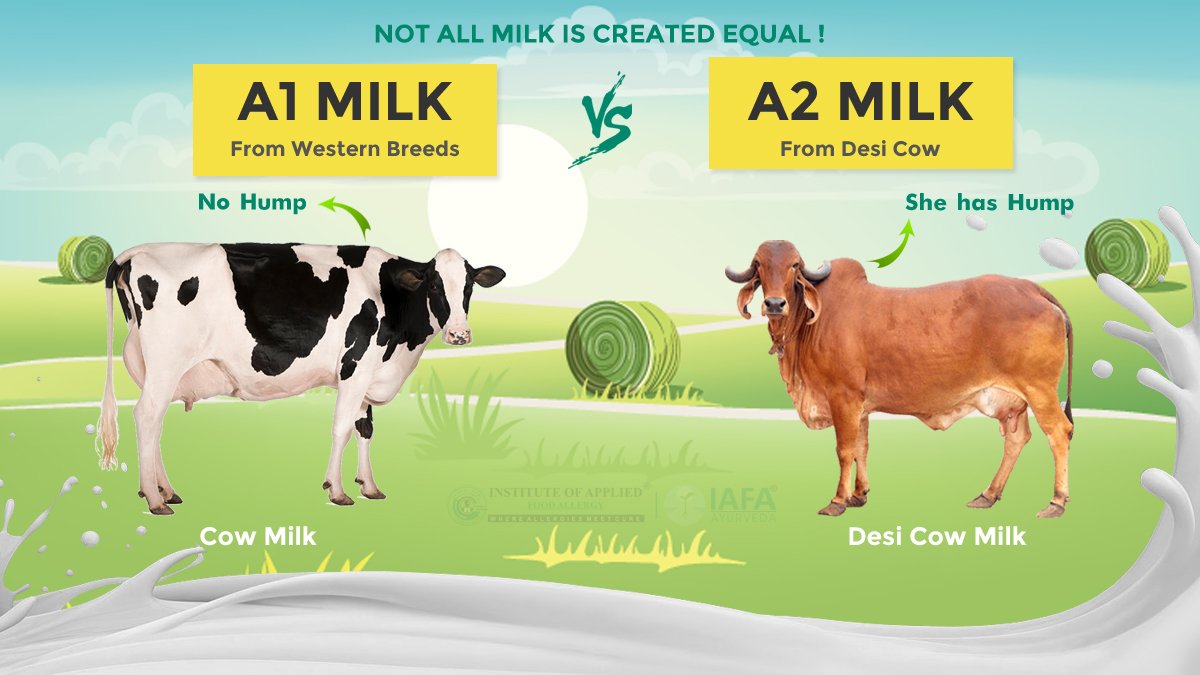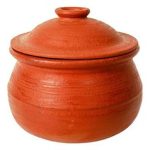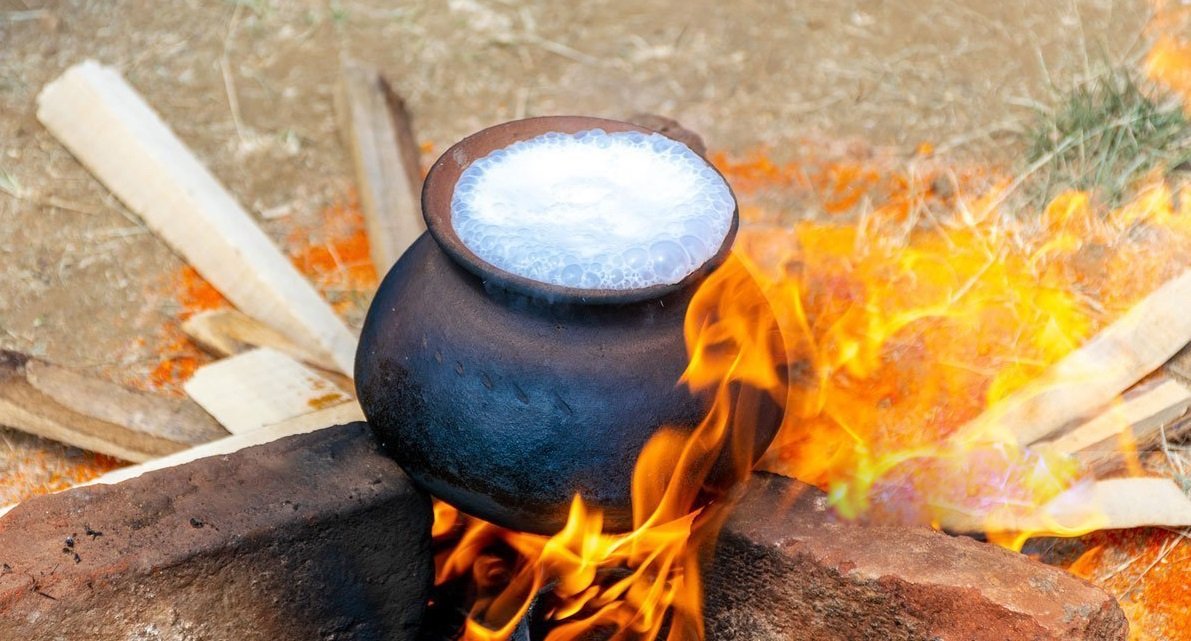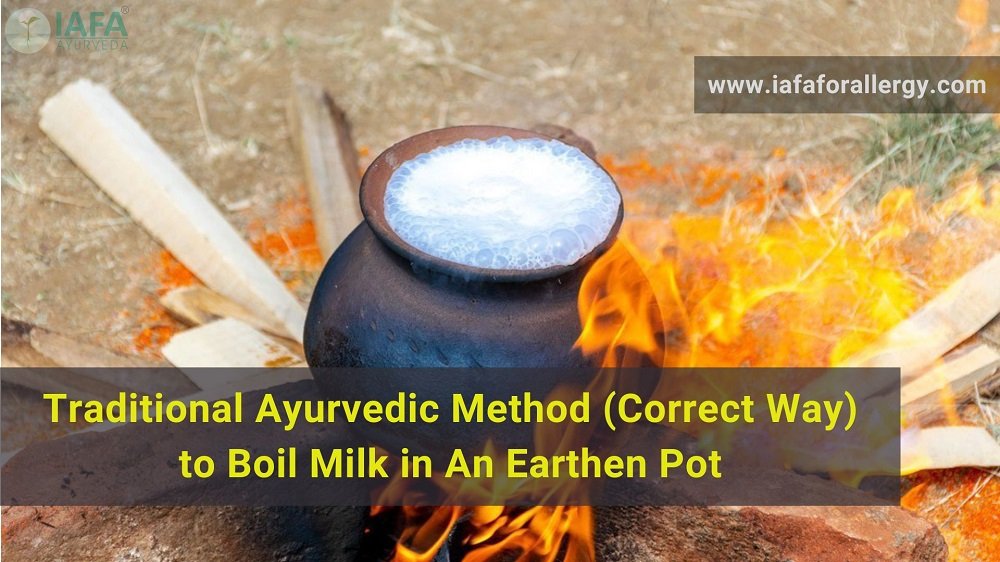Using earthen pots for cooking has become the most common since ancient days. Earthen pot and A2 milk can keep away a lot of milk allergies and intolerance. Ayurveda also recommends using earthen over any kind of vessel because earthen pots consist of sulfur, potassium, iron, calcium, and others that can be added to the food that has been cooked.
Read – Why Cow’s Milk Allergy or Milk Intolerance Become Common in the World Nowadays?
This is a small yet informative article, where you will know the traditional Ayurvedic method (the correct way) to boil Milk in an Earthen pot and also its benefits.
How to Boil Milk in an Earthen Pot? (Stepwise Guide)
1. Choose A2 Cow Milk:

Ayurveda always encourages milk that is of natural origin, which is not genetically engineered, or milk with no added preservatives or flavors. Ayurveda warns us to avoid consuming anything that is virudh Aahar and not compatible with our bodies. So, based on this, the best milk is Indian desi milk or A2 milk. For more details about A2 milk read it here.
2. Seasoning the Earthen Pot:
 If you have newly bought an earthen pot, it must be seasoned thoroughly before using it. Season the earthen pot by keeping it in the water for one night being undisturbed. In this way, you can avoid the early cracks of the utensil and it can last for a long time. This is the traditional concept of an earthen pot.
If you have newly bought an earthen pot, it must be seasoned thoroughly before using it. Season the earthen pot by keeping it in the water for one night being undisturbed. In this way, you can avoid the early cracks of the utensil and it can last for a long time. This is the traditional concept of an earthen pot.
3. Boil the Milk in an Earthen Pot:
 Transfer the milk to the earthen pot and keep it on the flame and leave it there for a few minutes. Remember, always keep the flame to sim or low. Never heat the earthen pots on a high flame as it may get cracks on them.
Transfer the milk to the earthen pot and keep it on the flame and leave it there for a few minutes. Remember, always keep the flame to sim or low. Never heat the earthen pots on a high flame as it may get cracks on them.
4. How Can You Notice When It’s Time to Turn Off the Flame?
Do not let the milk over-boil. Always boil the milk to optimum temperature and over-boiling changes the taste of the milk. If you are not sure how you can identify when the milk is perfectly boiled, you can use a thermometer to measure the optimum heat. The optimum heat must be around 80°C.
That’s it! Simple steps to boil the milk using an earthen pot. Ayurveda considers this milk as shresht (pure) and nutritious.
5. What to Do Once Milk is Boiled?
Here, we all make a simple mistake. As soon as the milk is completely boiled, we turn off the flame and put it on the slab of the kitchen. One must avoid doing it. As the earthen pot retains the heat for a long period, it doesn’t get cooled instantly. Keeping it on the cool slab may bring chances of getting cracks on the pot.
Why Should One Boil Milk in an Earthen Pot?
Well the benefits of an earthen pot are many, but a few among them are:
- Ayurveda suggests using earthen utensils for cooking as these are closer to nature and earth (Prithvi) is one of the five elements as per Ayurveda.
- Earthen pots retain 100% of the nutrients from the milk.
- They will add extra needed nutrients and vitamins to the milk.
- The milk that is boiled in an earthen pot is less allergic.
- There are fewer no chances of getting allergies or milk intolerance from drinking the earthen pot boiled A2 milk as per ancient Ayurveda.
Conclusion
Ayurveda highly recommends using an earthen pot for boiling the milk. Dr. Sahil Gupta, the founder of IAFA® always encourages the patients not only about the use of ayurvedic herbs but also to adapt to the Ayurvedic lifestyle. It’s important to follow the ancient ayurvedic methods to fight emerging allergies and intolerances. In this way, one can prevent themselves from not only diseases but also can get 100% nutrients from the food they consume.







